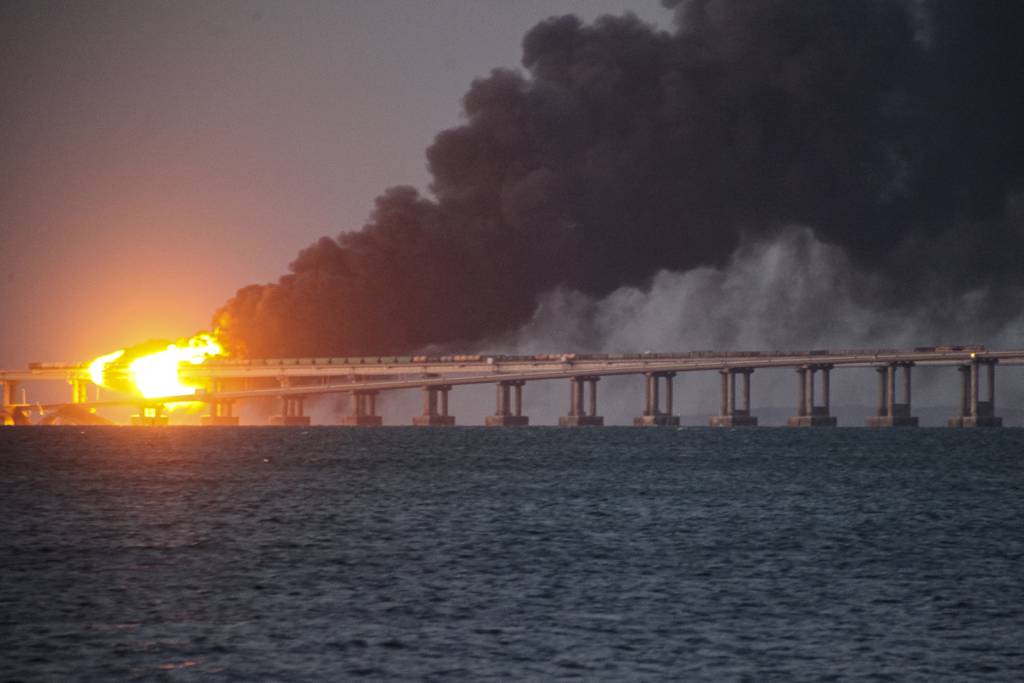As Ukrainian forces assume a more defensive posture, Kyiv’s irregular warfare behind enemy lines becomes even more important. Ukrainian irregulars are already active, even striking distant targets in Russia. With Western support and technology, these silent warriors could become even more potent.
Using unorthodox and imaginative tactics, Ukraine’s irregular warriors are notching stunning gains. Sea drones sink modern warships in the Black Sea. Aerial drones evade Russia’s best air defenses to strike oil facilities in St. Petersburg. Saboteurs blow up trains and paralyze Russia’s longest rail tunnel in the Far East. Officials and turncoats in Russian-occupied areas are routinely assassinated.
Two years ago, when Ukraine’s military prospects seemed dimmer, Western allies considered helping to sponsor a government in exile and subsequent guerilla operations. There is a Ukrainian precedent: Insurgents fought in World War II and endured for a decade afterward.
In 2022, some in the West worried that backing a Ukrainian insurgency could draw NATO and Russian forces into conflict. These concerns might now be less. Russia has not attacked NATO member states, and Ukraine has not used Western arms to strike ground targets in Russia.
The West has long had experience in aiding resistance movements. In World War II, covert Allied supplies helped Yugoslav Partisans tie down Nazi divisions. In the 1980s, the U.S. helped Afghan insurgents fight Soviet occupiers, and it supported the Solidarity free trade union to oppose Poland’s Soviet-backed regime.
Drawing on this experience and emerging technologies, how might the West further strengthen Ukraine’s irregular warfare campaign as part of an overall strategy to win the war?
First, in a conventional war between industrial powers, irregular warfare operations will be only a supporting element to the main strategy. They can, however, have outsized impact if properly integrated into that strategy. D-Day sabotage by the French resistance is an example.
A common definition of strategy is a method to combine ways and means to accomplish an end. For Ukraine, this is the restoration of territorial integrity within its internationally recognized borders. Standing in the way of this, however, is the Russian army. Last year, it blunted Ukraine’s counteroffensive, although Russia’s own offensive also failed.
Despite some recent success, the Russian army has vulnerabilities in logistics, command and control, and morale. Ukraine’s fighting force could further exploit these weaknesses with improved integration of intelligence, surveillance, and reconnaissance assets linked to longer-range fires. The West could help by providing greater support to Ukrainian operations behind Russian lines, and to longer-range fires for strikes deep behind them.
This integrated capability could help Ukraine suppress enemy air defenses. This will be essential if newly arriving F-16 jets are to provide effective close-air support to future Ukrainian offensives. The Russian military failed to do this when increasing air sorties to support its Avdiivka offensive and lost a dozen combat aircraft. Ukrainian forces could not afford a similar mistake.
Longer-range fires would enable Ukraine to seriously disrupt Russian logistics as well as command and control. These fires could destroy or render inoperable the Kerch Bridge and other bridges as well as railyards, warehouses and ammunition depots in occupied Ukraine and over the border in Russia. If Moscow can daily target Ukrainian civilians, Kyiv should have the ability to strike Russian military assets that sow death and destruction on Ukrainian soil.
Dismantling Russian air defenses and logistics requires intelligence gathered behind enemy lines. Ukraine has shown that even with limited resources it can conduct intelligence-based deep strikes in Crimea and elsewhere. The keys to scaling this up are increased on-the-ground human and technical intelligence and secure communications.
Irregular warfare behind Russian lines need not resemble the guerrilla exploits of the French, Polish or Yugoslav resistance movements in World War II. Smart weapons and Russian war crimes against Ukrainian civilians make this unnecessary or unwise. Instead, Ukrainian irregular warfare should resemble stealthy Cold War intelligence and counterintelligence work rather than large-scale paramilitary operations.
The West has been criticized for being overly reluctant to provide Ukraine with some advanced conventional arms. This self-deterrence ought not stay the West’s hand in helping Ukraine with irregular warfare. This is unlikely to pose escalatory risks that worry some in the West.
A strategy to attrit Russian army logistics and undermine morale is optimal for indirect, irregular warfare. It will support the more substantial conventional offensive operations needed to expel Russian forces from Ukraine.
Phillip Wasielewski is a senior fellow in the Eurasia Program at the Foreign Policy Research Institute think tank. He previously served as a paramilitary case officer with a 31-year career in the CIA’s Directorate of Operations. William Courtney is an adjunct senior fellow at the think tank Rand and a former U.S. ambassador to Kazakhstan and Georgia.








